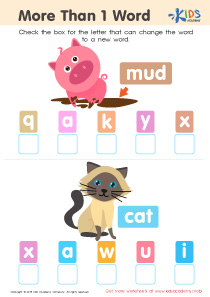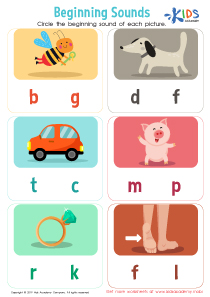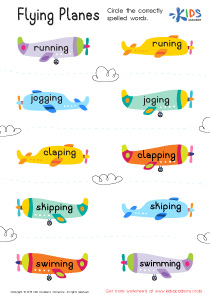Ending Sounds Worksheets for Ages 5-7
6 filtered results
-
From - To
Enhance your child's phonemic awareness with our engaging "Ending Sounds Worksheets for Ages 5-7." Designed specifically for early learners, these worksheets help kids identify and practice the ending sounds of words in a fun and interactive way. With vibrant illustrations and simple exercises, students will enjoy sorting through different images and connecting them with their corresponding ending sounds. These worksheets are perfect for classroom use or home practice, ensuring that children strengthen their vocabulary and reading skills. Foster a love for language while encouraging critical thinking and listening skills. Unlock your child's potential with our thoughtfully crafted activities today!
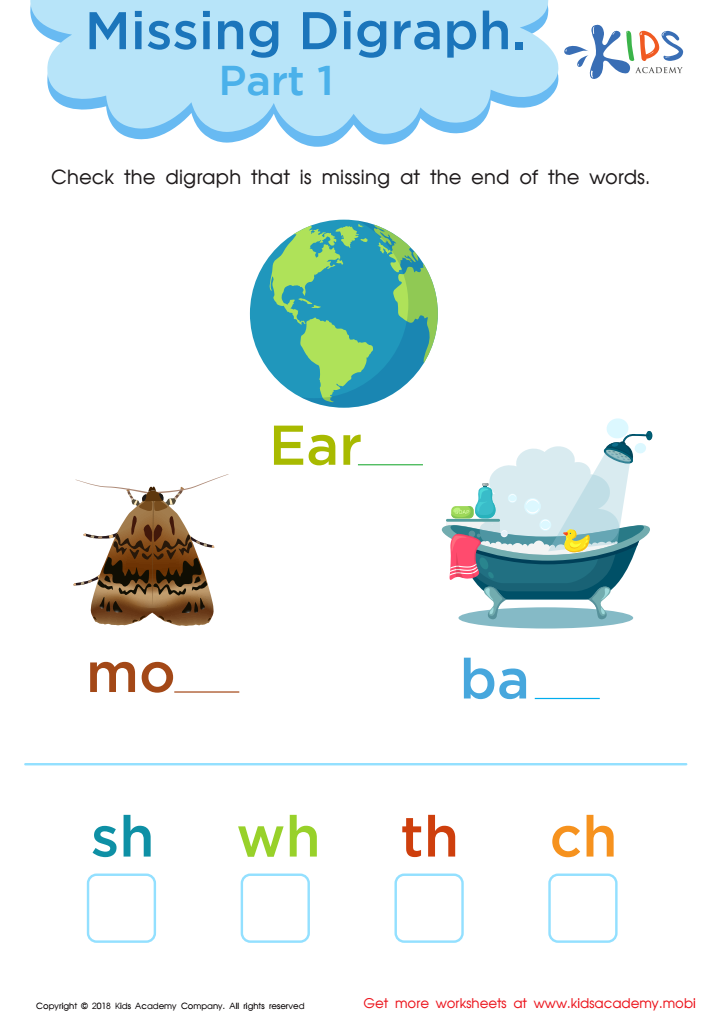

Missing Digraph: Part 1 Worksheet
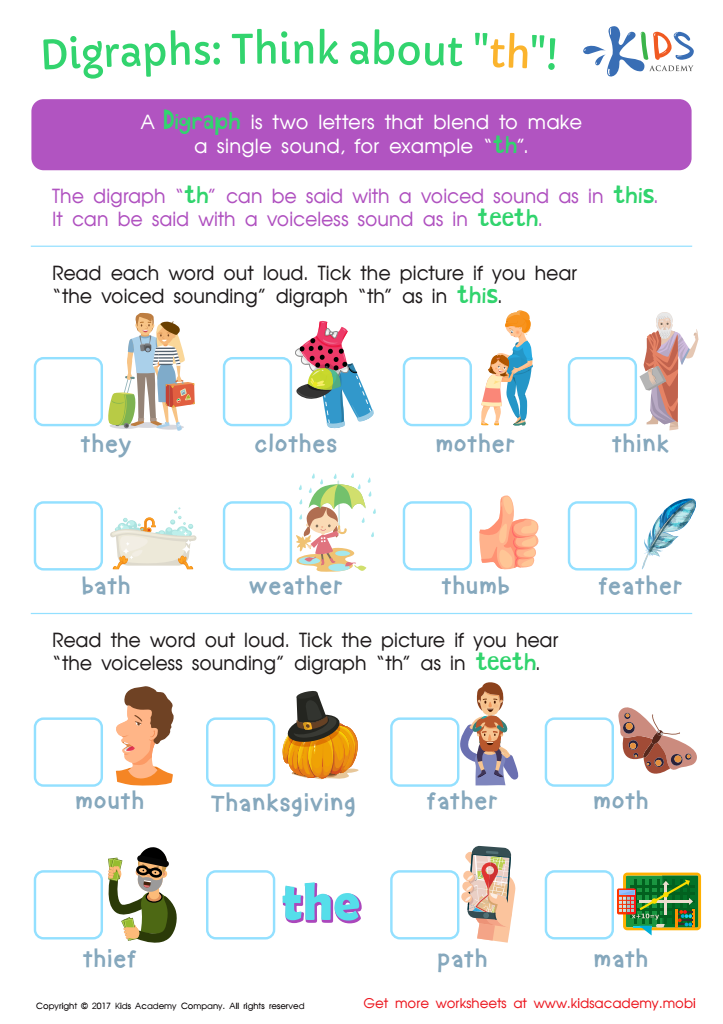

Digraphs: Think About "th" Worksheet
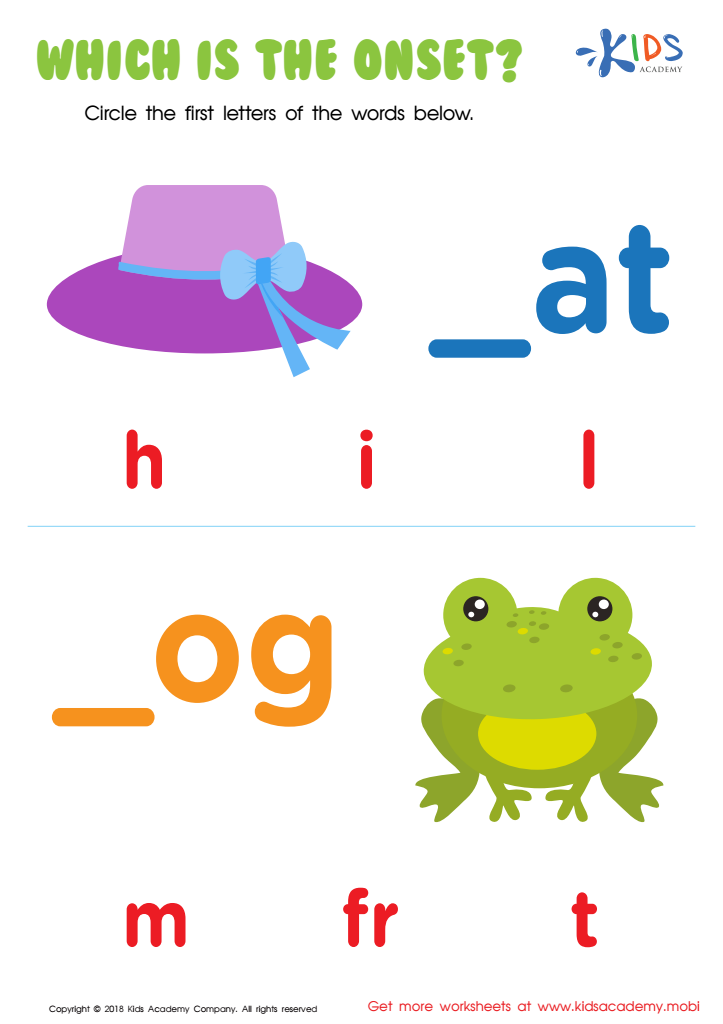

Which Is the Onset? Worksheet
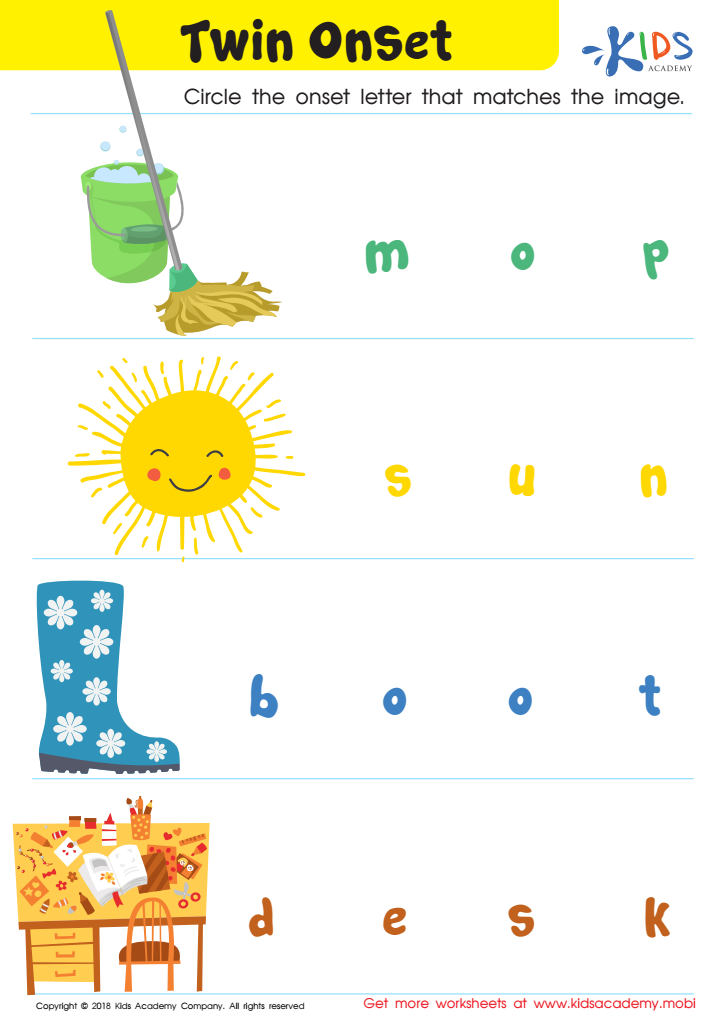

Twin Onset Worksheet
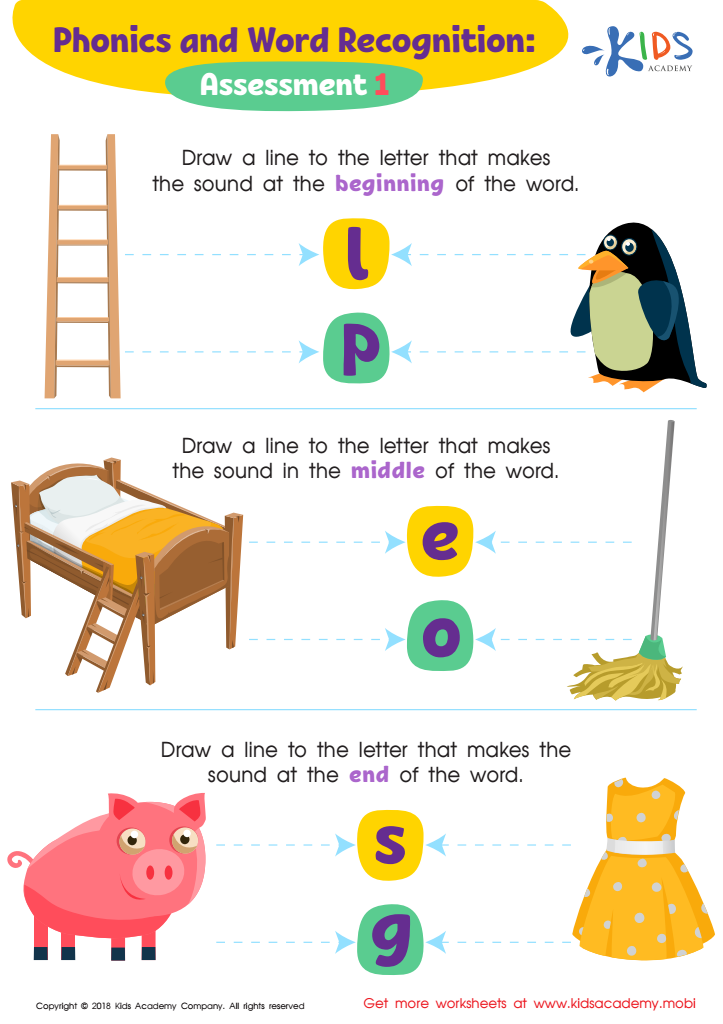

Phonics and Word Recognition: Assessment 1 ELA Worksheet
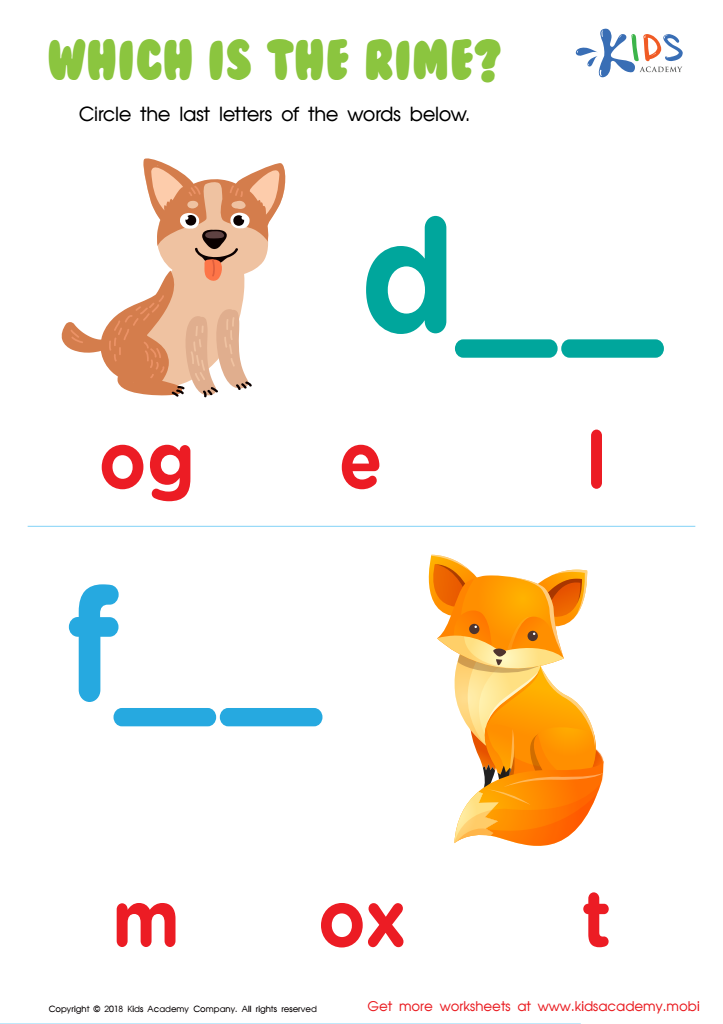

Which Is the Rime? Worksheet
Ending sounds are a crucial component of early reading and language development for children ages 5-7. As children learn to read, they must understand that words are made up of individual sounds, or phonemes. Recognizing ending sounds helps children decode words, support spelling, and enhance their vocabulary.
When children can isolate and articulate the ending sounds of words, they develop phonemic awareness, which is a foundational skill for reading. This skill ensures they can differentiate between similar words, such as "bat" and "bag," which is essential for both reading comprehension and effective communication.
Moreover, focusing on ending sounds promotes early writing skills. As children begin to spell, understanding that the sound at the end of a word can indicate its meaning or relate to other words enhances their ability to express themselves on paper.
In group settings, such as classrooms, children benefit from activities that emphasize ending sounds, fostering camaraderie and making learning a collaborative experience. By tuning into ending sounds, parents and teachers can significantly impact a child's literacy journey, helping them become confident readers and writers who can engage successfully with other academic content. Therefore, investing time in this area is essential for their long-term educational achievements.
 Assign to My Students
Assign to My Students






